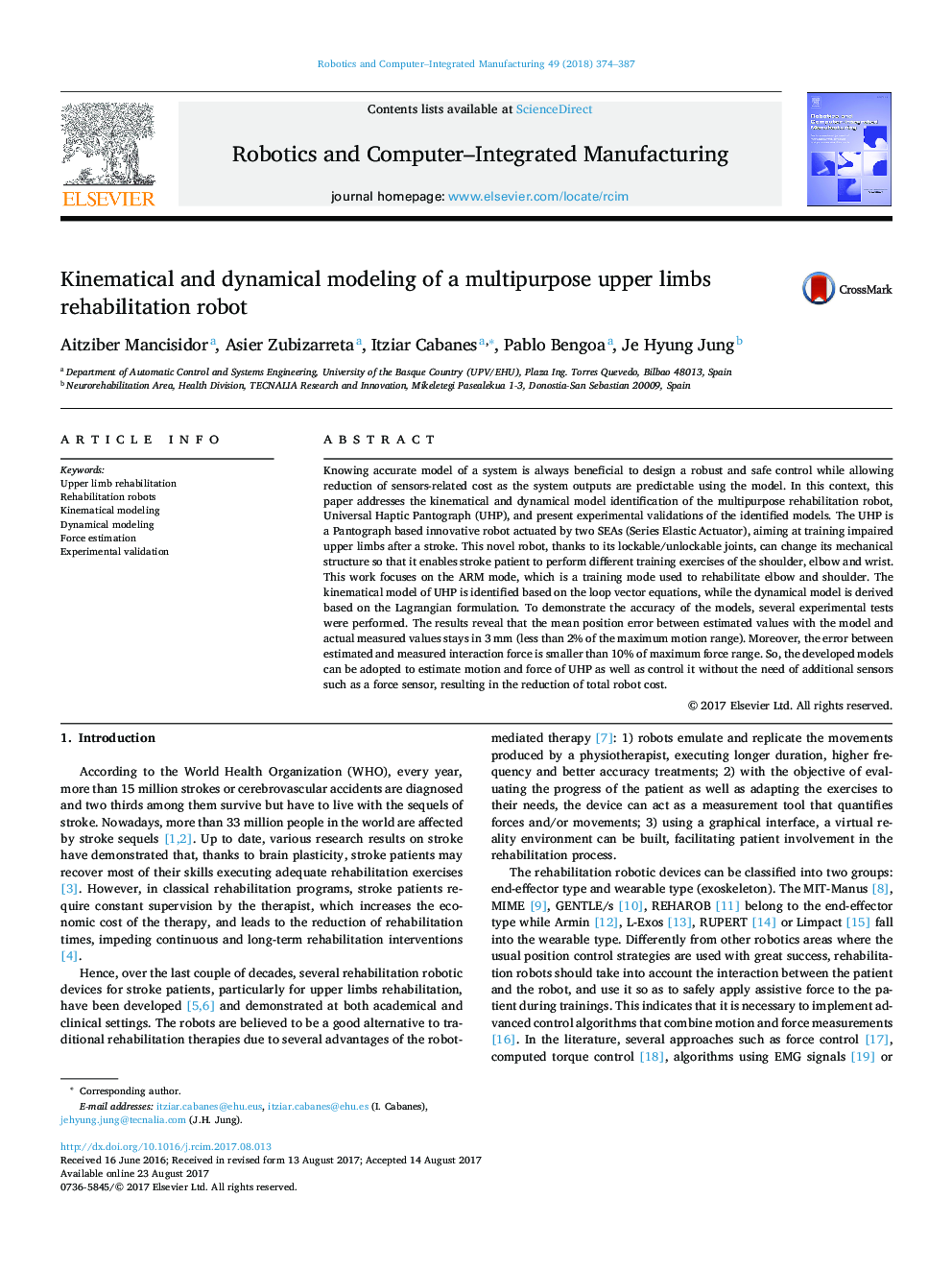| کد مقاله | کد نشریه | سال انتشار | مقاله انگلیسی | نسخه تمام متن |
|---|---|---|---|---|
| 4948959 | 1439928 | 2018 | 14 صفحه PDF | دانلود رایگان |
- A model of the robot is essential to design proper and safe controllers.
- The kinematical and dynamical models of the UHP robot have been identified.
- The UHP is an innovative multipurpose rehabilitation robot for upper limbs.
- Several experimental test have been carried out to validate the identified models.
- Results show that the models can be used for force and motion estimation.
Knowing accurate model of a system is always beneficial to design a robust and safe control while allowing reduction of sensors-related cost as the system outputs are predictable using the model. In this context, this paper addresses the kinematical and dynamical model identification of the multipurpose rehabilitation robot, Universal Haptic Pantograph (UHP), and present experimental validations of the identified models. The UHP is a Pantograph based innovative robot actuated by two SEAs (Series Elastic Actuator), aiming at training impaired upper limbs after a stroke. This novel robot, thanks to its lockable/unlockable joints, can change its mechanical structure so that it enables stroke patient to perform different training exercises of the shoulder, elbow and wrist. This work focuses on the ARM mode, which is a training mode used to rehabilitate elbow and shoulder. The kinematical model of UHP is identified based on the loop vector equations, while the dynamical model is derived based on the Lagrangian formulation. To demonstrate the accuracy of the models, several experimental tests were performed. The results reveal that the mean position error between estimated values with the model and actual measured values stays in 3Â mm (less than 2% of the maximum motion range). Moreover, the error between estimated and measured interaction force is smaller than 10% of maximum force range. So, the developed models can be adopted to estimate motion and force of UHP as well as control it without the need of additional sensors such as a force sensor, resulting in the reduction of total robot cost.
Journal: Robotics and Computer-Integrated Manufacturing - Volume 49, February 2018, Pages 374-387
